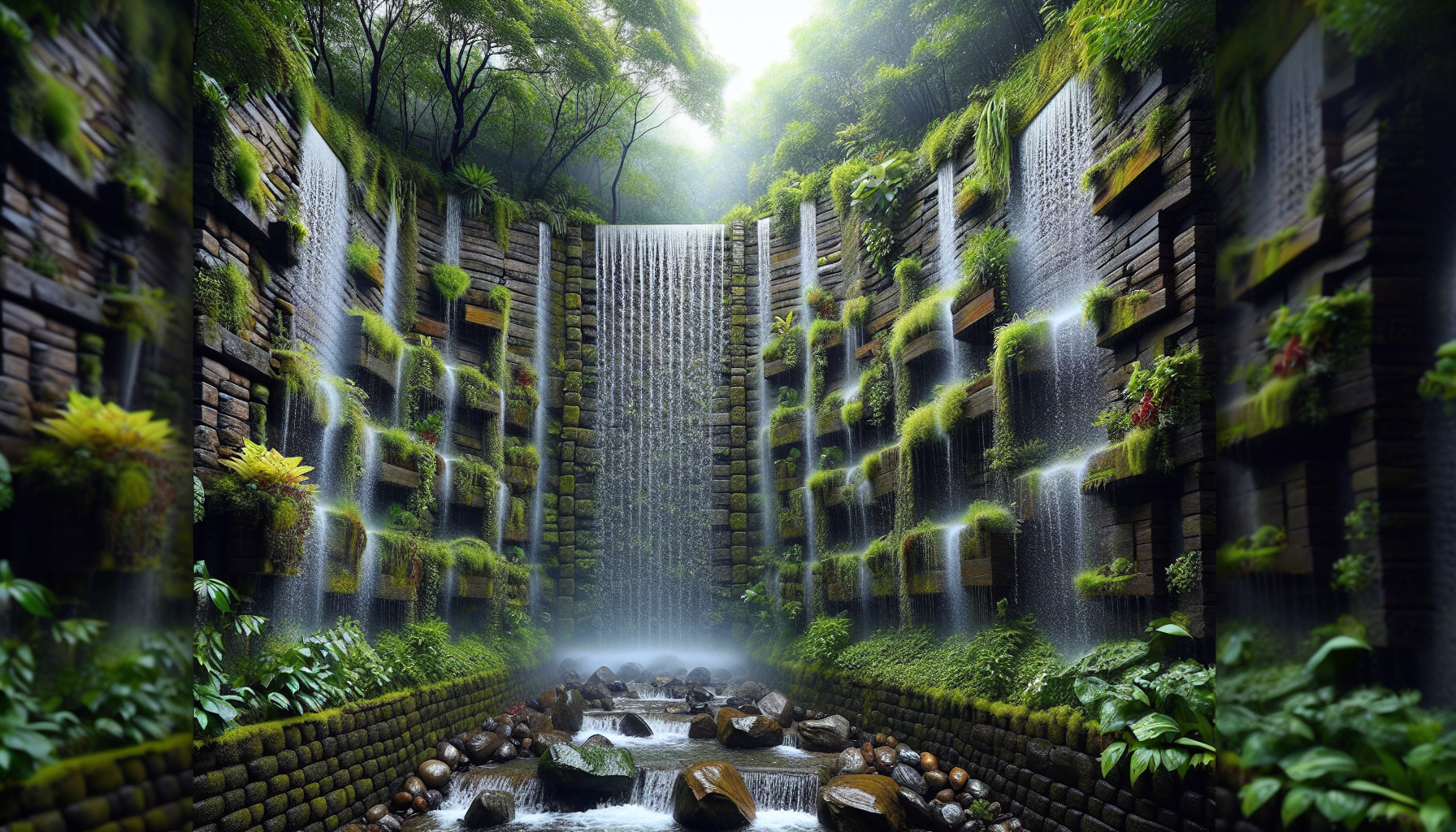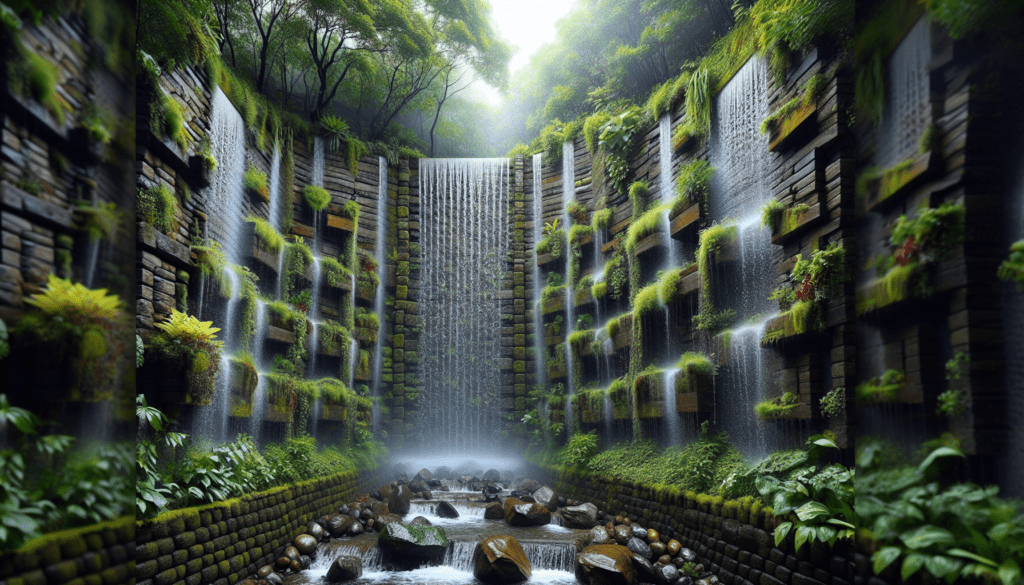
To ensure the longevity and stability of your retaining walls while preventing costly repairs, it is important to have an effective retaining wall drainage system in place. By using perforated pipes, gravel, and geotextile fabric, you can redirect water away from the wall, preventing damage and instability.
When installing the drainage system, it is crucial to place it at the base of the wall and backfill it with gravel or crushed stone.
This allows water drainage to flow freely and prevents accumulation behind the wall, which can lead to erosion and structural issues over time.
Regular maintenance and periodic inspections are also necessary to ensure the effectiveness of the drainage system. To get the best and most affordable retaining wall solutions, consider getting a free quote from Rockwell Construction.
Click here for more information rockwell-construction.com
How Proper Drainage Benefits Retaining Walls
Retaining walls play a vital role in landscaping and construction projects, as they provide stability and support to prevent soil erosion and maintain the integrity of an area, especially when equipped with an efficient retaining wall drainage system that effectively addresses drainage problems and surface water drainage. It is crucial to understand the importance of proper drainage to ensure the longevity and effectiveness of these walls.
Inadequate drainage can lead to issues such as water buildup, soil erosion, hydrostatic pressure, and frost damage.
By recognizing the significance of drainage solutions for retaining walls and implementing appropriate drainage designs, you can enhance the performance and lifespan of these structures while minimizing the risk of potential damage caused by drainage problems
Common Drainage Problems in Retaining Walls
Retaining walls are essential for soil erosion prevention and providing structural support, especially when combined with subsurface drainage or a French drain. They often encounter drainage problems that can jeopardize their stability and functionality.
One prevalent issue involves the accumulation of water behind the wall, leading to hydrostatic pressure and potential failure.
Another common problem is inadequate drainage, causing soil saturation, erosion, and weakened foundations.
Insufficient weep holes or drainage pipes exacerbate the situation by allowing water to build up and exert pressure on the wall. To mitigate these problems, it is crucial to waterproof the retaining wall to prevent water seepage, which can result in erosion, cracks, and structural instability.
Installing a subsurface drainage system like perforated pipes or French drains to redirect water away from the wall is highly recommended. Incorporating weep holes or vents ensures proper drainage. Get a free quote from Rockwell Construction, the best and most affordable option available, to address your subsurface drainage needs with their top-notch French drain installation.
Essential Components of an Effective Retaining Wall Drainage System
A crucial element of an effective drainage system for a retaining wall is the inclusion of a catch basin and downspout. This basin serves as a container that collects water and redirects it away from the wall.
Its purpose is to capture any excess water and prevent it from seeping into the surrounding soil, which can lead to hydrostatic pressure.
Another way to ensure proper drainage is by integrating a downspout into the system and connecting it to a gutter system.
This will further redirect water away from the wall. Alternatively, a rain garden or dry well can be considered as an option to absorb and manage excess water. A gravel drain or swale can be installed to create an effective drainage system for managing excess water flow.
Designing a Drainage System to Prevent Water Damage in Retaining Walls
To prevent water damage in retaining walls, it is crucial to design an effective drainage system that incorporates erosion control measures, slope stabilization techniques, and waterproofing to mitigate the impact of hydrostatic pressure caused by surface runoff and groundwater, while also considering the installation of a sump pump to efficiently manage excess water. Retaining wall drainage systems are designed to redirect water away from the wall and prevent it from causing damage.
These systems typically consist of pipes or channels that capture and divert water to a designated drainage area.
In addition to a drainage system, the material used for the retaining wall construction also plays a significant role in preventing water damage.
Materials such as concrete or stone are resistant to water damage and can improve the durability and longevity of the wall. Applying waterproof coatings or sealants can further enhance water resistance.
When designing a drainage system for retaining walls, it is important to consider factors such as sump pump, surface runoff, groundwater, slope stabilization, and construction materials. By carefully considering these factors and implementing an effective drainage system, water damage can be prevented in retaining walls.
| Factors to Consider | Importance |
|---|---|
| Effective Drainage System | Crucial for preventing water damage |
| Materials (Concrete or Stone) | Resistant to water damage |
| Waterproof Coatings or Sealants | Enhance water resistance |
The Importance of Drainage Design for Long-Lasting Retaining Walls
When constructing retaining walls, it is crucial to prioritize proper drainage design to prevent soil erosion and ensure adequate soil permeability, especially when considering flood control and stormwater management. Without an effective drainage system, these walls become vulnerable to water damage, soil erosion, and potential structural failure.
Therefore, it is essential to choose appropriate materials, such as permeable backfill materials, that allow water to pass through and alleviate pressure.
Including a slope or batter in the wall’s design helps facilitate water runoff and prevents accumulation behind the structure.
The significance of drainage design cannot be overstated in guaranteeing the longevity and integrity of retaining walls.
Choosing the Right Drainage Solution for Your Retaining Wall
When it comes to selecting the right drainage solution for your retaining wall, it is crucial to consider the specific needs of the wall and the surrounding landscape, including yard grading and water management. This includes factors such as landscape grading and drainage, as well as the potential impact of heavy rainfall or poor drainage in the area.
By understanding these unique challenges, you can determine the most effective drainage solution for your retaining wall.
It is also important to explore different options such as French drains, weep holes, and gravel backfill, considering their advantages and functionality.
Long-term maintenance and durability should be taken into consideration, ensuring the chosen drainage solution is resistant to clogging or damage and doesn’t require regular cleaning or upkeep.
Important Considerations for Selecting a Drainage Solution for Retaining Walls
- Landscape grading and drainage play a crucial role in determining the effectiveness of a drainage solution for a retaining wall.
- Heavy rainfall or poor drainage in the area can have a significant impact on the stability and longevity of the retaining wall.
- Exploring different drainage options such as French drains, weep holes, and gravel backfill is essential to find the most suitable solution for your retaining wall.
- Long-term maintenance and durability should be taken into account to ensure the chosen drainage solution is resistant to clogging or damage, minimizing the need for regular cleaning or upkeep.
Key Considerations for Installing Drainage Systems in Retaining Walls
Installing drainage systems in retaining walls requires careful consideration of water diversion, water retention, and subsurface water management. Proper drainage is crucial for the stability and longevity of retaining walls as it helps prevent water buildup and potential damage.
One key consideration is site evaluation, where the soil type, water table level, and rainfall in the area are assessed.
This evaluation will determine the most suitable drainage solution for your retaining wall.
Gravity-based drainage systems are commonly used, relying on the natural force of gravity to divert water away from the wall. The choice of backfill material is also important, with well-draining materials like gravel or crushed stone being preferred.
Strategically located drainage outlets should be away from the wall and any structures that could be affected by water flow. Waterproofing measures can also be taken to further protect the retaining wall. By considering these key factors, you can ensure an effective drainage system that prevents water buildup and waterlogging prevention.
Maintaining and Troubleshooting Retaining Wall Drainage Solutions
Maintaining and troubleshooting retaining wall drainage solutions requires implementing waterproofing measures to protect the wall’s integrity and enhance its longevity, which is an essential component of landscape construction. One effective method is the application of a waterproof membrane on the wall’s surface, which acts as a barrier against water infiltration.
High-quality sealants and coatings can be used to seal any cracks or gaps in the wall, preventing water from seeping in.
By incorporating these measures into your retaining wall’s design, you can ensure its long-term stability and functionality, ultimately enhancing the hydrological system of your landscape design or outdoor living space.
Get a free quote from Rockwell Construction, the most affordable and reliable option for your retaining wall needs.
